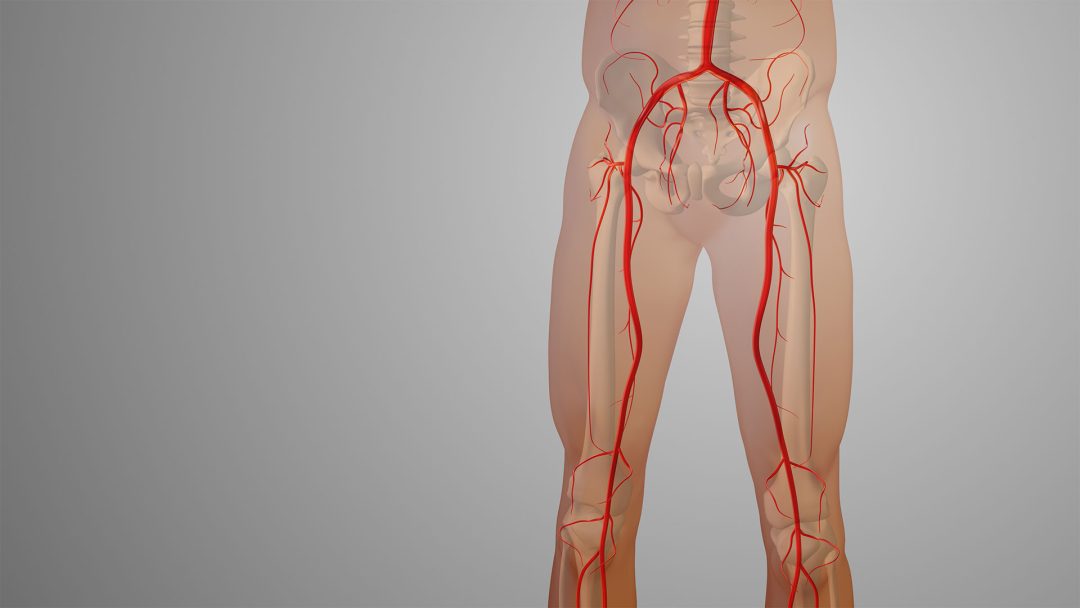PAD

Peripheral arterial occlusive disease (PAD) is a vascular disease in which the arteries that transport blood to the extremities are narrowed or blocked. Classic symptoms are pain when walking, which subsides when standing still (intermittent claudication), as well as a feeling of coldness and muscle weakness in the legs. In advanced cases, open wounds, ulcers or even tissue necrosis can occur because the reduced blood flow can impair wound healing.
Ursachen einer PAD
The formation of arteriosclerotic plaques in the arteries is the main cause of PAD. Consequently, the causes of PAD overlap with the triggers of arteriosclerosis:
- Smoking
- diabetes
- High blood pressure
- Unhealthy eating habits
- High cholesterol levels (hypercholesterolemia)
- Toxic stress due to environmental factors
Symptoms of PAD
The symptoms of PAD result from reduced blood flow to the extremities:
- Pain in the extremities during physical exertion. The legs and feet are particularly affected. In advanced stages, pain also occurs at rest.
- Muscle weakness
- Cold arms, hands, legs and feet
- Poor wound healing
- Limited mobility and loss of sensitivity in the toes
- Dry skin on legs and feet
- Slowly growing toenails and loss of hair on the legs
Therapy for PAD
The treatment of PAD aims to improve blood circulation and slow down the progression of the disease. This can be achieved through lifestyle changes such as stopping smoking, a healthy diet and regular exercise.
Drug therapy, endovascular procedures or bypass surgery may be required to open up the blood vessels.
Early detection and treatment of PAHV is crucial to minimize the risk of serious complications such as amputations. People with risk factors should consider regular medical check-ups.
It is crucial to take preventive measures to avoid PAD. These include moderate exercise and a balanced diet. Due to increasing environmental pollution, regular detoxification accompanied by a specialist should be carried out.
Med. pract. Dana Hreus M.A.
In the case of PAD, an integrative and individualized approach that is not only aimed at alleviating symptoms can achieve a sustainable normalization of blood circulation.

Further information
The information listed contains relevant topics and serves to improve understanding.